Milan, renowned for its cultural vibrancy and illustrious educational institutions, offers an immersive experience for students looking to broaden their horizons. Amidst the city’s historical architecture and contemporary design, selecting the right neighborhood is essential to living the best student life. Each district in Milan has its own character and amenities, making it crucial for students to consider proximity to their university, the cost of living, and the local lifestyle.

Understanding the nuances of Milan’s public transportation is also key to ensuring mobility throughout the city. Students can benefit from the rich professional opportunities available in Italy’s financial hub, while also enjoying the dynamic cultural scene. Access to cafes, libraries, and study spaces, as well as a range of accommodation options, can significantly impact the student experience.
Where to stay in Milan
Key Takeaways
- Choosing the right location is crucial for a wholesome student experience in Milan.
- Navigating public transportation options is important for city-wide mobility.
- Balancing lifestyle preferences with educational needs enhances student living.
Studying in Milan
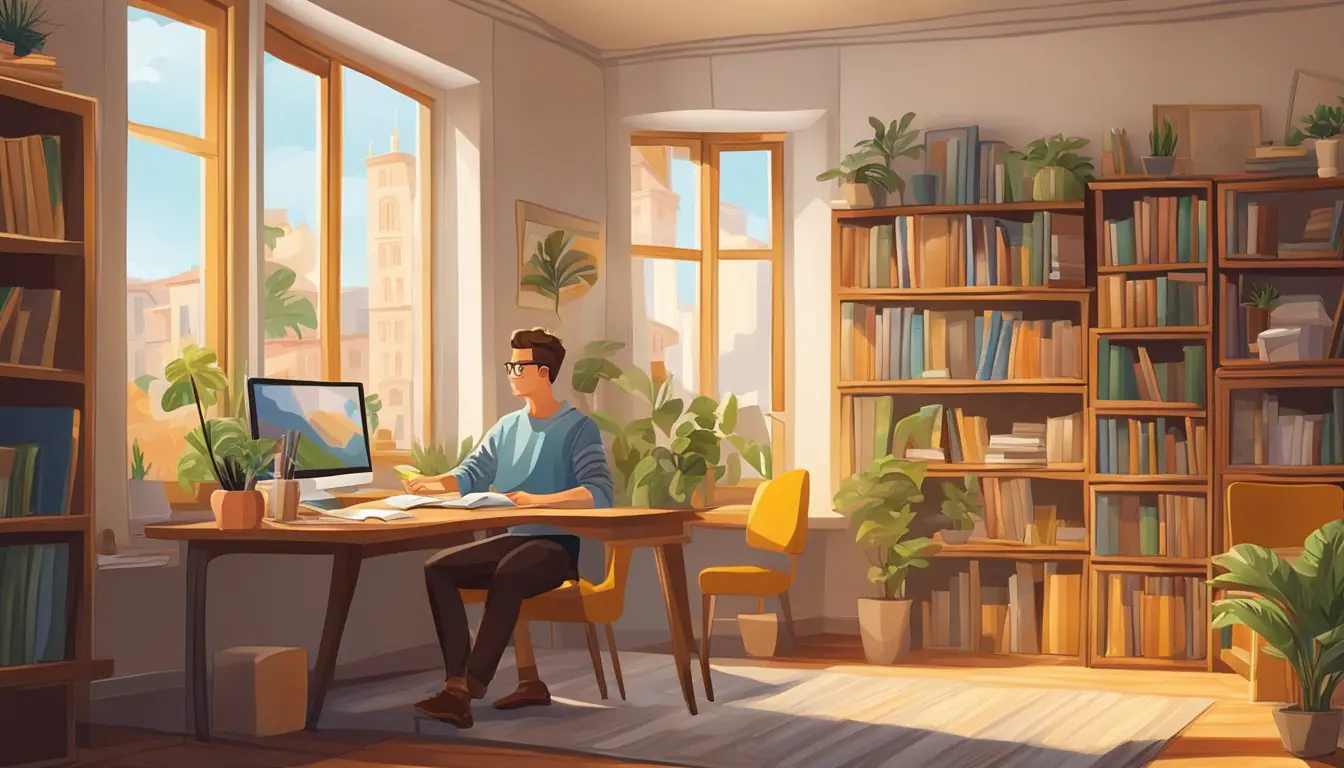
Milan is not only Italy’s fashion capital but also a hub for students seeking quality higher education in a vibrant urban setting. It is home to renowned universities and offers a dynamic lifestyle conducive to both local and international students.
Universities and Higher Education
Milan hosts several prestigious universities that attract students globally. The University of Milan, also known as UniMi, is one of the largest in Europe, providing a wide range of degree programs. The Politecnico di Milano is esteemed for engineering and architecture disciplines, and the University of Milan Bicocca specializes in a variety of scientific and humanities courses. These institutions create a diverse academic community within Milan’s educational district, Città Studi. For international students, Milan becomes an attractive destination due to its educational opportunities and its role as a prominent European city.
Student Lifestyle
Life as a student in Milan is characterized by an amalgamation of academic rigor and cultural immersion. A significant aspect of the student experience is finding suitable student accommodation, with options ranging from shared rooms to private studio apartments. Students can live in the heart of the city or opt for housing closer to campus areas, which are well-connected by Milan’s efficient public transport system.
Social life for students in Milan includes exploring Italy’s rich history, fashion, and gastronomy. International students particularly benefit from the cosmopolitan environment, networking with peers from around the globe. University events, cultural festivals, and the proximity to other European destinations ensure that student life in Milan is as educationally enriching as it is exciting.
Cost of Living
When considering study in Milan, students should be well-informed about the cost of living, which includes accommodation and daily expenses. It’s vital to budget wisely to enjoy the best student life this vibrant city has to offer.
Accommodation
Accommodation is one of the most significant monthly expenses for students in Milan. Students should expect to spend €500-€800 per month on shared apartments or student accommodation in Milan, depending on the location and amenities offered. Many opt for student housing which often comes with an inclusive package of services and utility bills. Discounts may be available for longer-term leases or during off-peak seasons.
Daily Expenses
Apart from accommodation, daily expenses such as groceries, transportation, and entertainment should be budgeted for. Students can anticipate spending an average of €300-€600 per month on these necessities. To manage their finances better, students can seek out affordable options, such as discount supermarkets and public transport passes which are often at a reduced rate for students. Some student accommodations also include extra services, helping to save on these costs.
Neighborhoods and Exploration
Choosing the right neighborhood in Milan can greatly enhance a student’s experience, offering vibrant atmospheres, diverse cultural experiences, and ample opportunities for adventure. Students can both delve into the bustling heart of city life and discover off-the-beaten-path treasures that make Milan unique.
Popular Districts
Navigli District is celebrated for its canals, designed by Leonardo da Vinci, which today form the backdrop for a lively area known for its nightlife and aperitivo culture. With a plethora of bars and eateries lining the waterways, it’s a prime choice for students who seek a blend of historical charm and contemporary buzz. Nearby Porta Genova station also makes it easily accessible for those looking to explore further.
Brera District, often regarded as the artistic heart of the city, offers a more sophisticated edge. Home to the Brera Academy of Fine Arts and a maze of cozy cafes and stylish boutiques, students can immerse themselves in Milan’s bohemian side. This district’s picture-perfect streets often lead to the iconic Bosco Verticale, a pair of residential towers adorned with vertical forests that symbolize sustainable urban living.
Moving towards the modern innovations, Porta Nuova and Garibaldi areas are a display of futuristic architecture and high-energy settings — think skyscrapers like the Unicredit Tower and bustling piazzas. They offer a glimpse into Milan’s ambitious future while providing a stark contrast to the historical neighborhoods.
Hidden Gems
While well-known districts provide a quintessential Milan experience, the city also nests several lesser-known neighborhoods that brim with local character. Isola, “the island” district, once a working-class area, has transformed into a hip enclave, home to artist studios and indie boutiques, all within the shadow of the modern skyscrapers of adjacent Garibaldi.
NOLO (North of Loreto), another up-and-coming area, invites students to explore its multiethnic fabric through eclectic eateries and alternative art spaces. This neighborhood’s charm lies in its vibrant community and is a perfect example of the city’s ongoing evolution.
Lambrate is a district that has recently gained attention for its growing design community, reflected in the Lambrate Design District events during Milan Design Week. For students, this evolving scene offers a mix of creativity and education in design and the arts.
Lastly, Porta Romana is often recommended for students due to its relative tranquility, green spaces, and proximity to the city centre and universities. It offers a balance between the busy city life and a peaceful residential vibe, allowing for easy exploration of both the inner and outer reaches of Milan.
Cultural Insights
Milan, as a hub of cultural richness, offers international students an opportunity to immerse themselves in a vibrant tapestry of art and design, as well as being surrounded by historical landmarks that echo the city’s storied past.
Art and Design
Milan is internationally recognized for its design scene and numerous art galleries. As a student in Milan, one can find endless inspiration by visiting the Triennale Design Museum, which showcases Italian design and hosts a range of temporary exhibitions. Another pivotal institution is the Pinacoteca di Brera, a premier art gallery housing an impressive collection of Italian Renaissance art. Moreover, the city breathes creativity through events like the annual Milan Design Week, which transforms locales into showrooms for the latest in design and innovation. Students can also uncover works by Leonardo da Vinci, including the iconic Last Supper, housed at Convent of Santa Maria delle Grazie.
Historical Landmarks
The city’s historical landmarks are a testament to Milan’s long and influential history. Sforzesco Castle is a monument not to be missed, featuring several museums that collectively contain a vast array of art and historical artifacts. The Duomo di Milano stands as a quintessential example of Gothic architecture and is central to Milan’s cultural character.
Beyond these mammoth structures, the city’s history can also be seen in the myriad of statues and public artworks peppering the streets, such as street art that gives voice to contemporary issues and movements. Milan’s history is also closely tied to fashion, with the Golden Quadrilateral offering a dense concentration of luxury boutiques and flagship shops, representing a living museum of style and elegance in Milan’s modern identity.
Lifestyle and Amenities
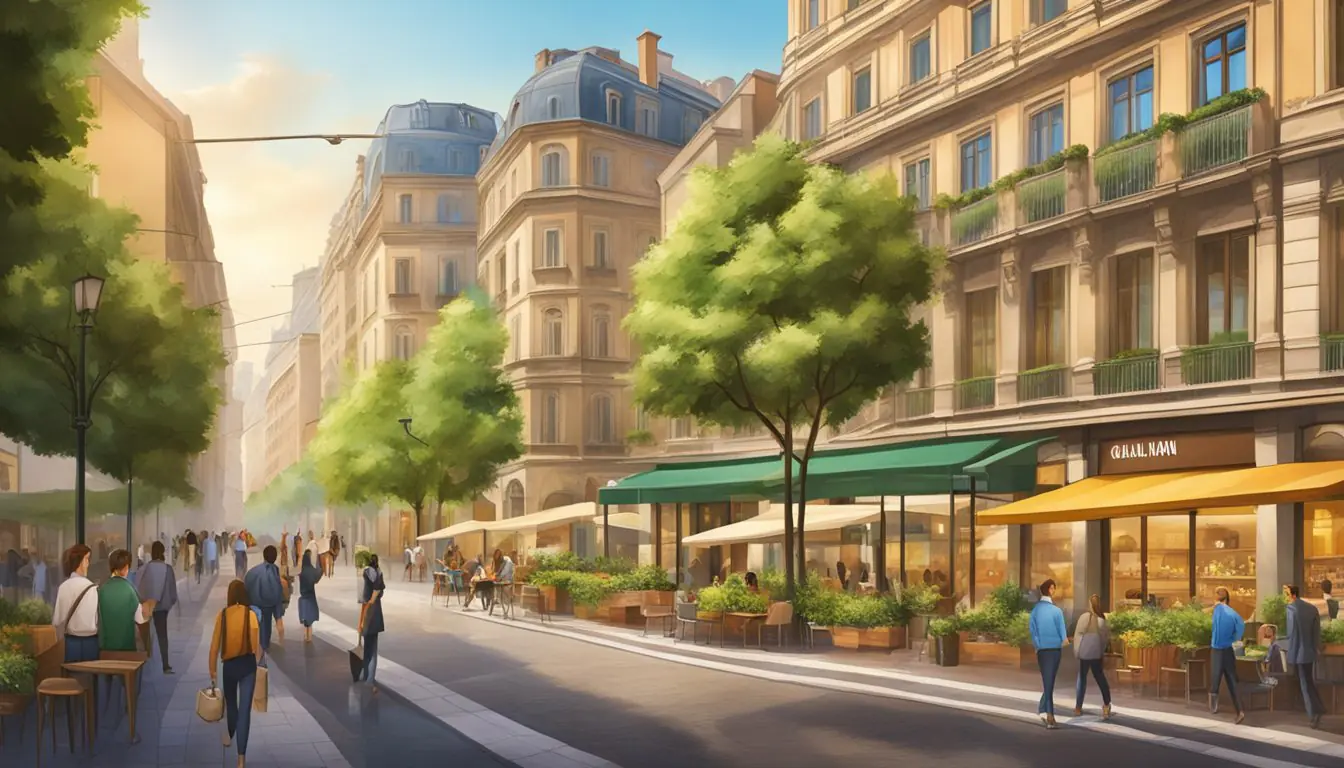
Milan, with its bustling streets and vibrant culture, offers a plethora of lifestyle and amenity options for students. Whether one is looking for an authentic dining experience or places to support their health and wellness journey, the city caters to every need.
Dining and Nightlife
Students in Milan can explore a wide range of dining options, from traditional Italian restaurants to contemporary cafes. For a taste of local delights, one might consider visiting spots that are popular among both students and locals. The nightlife in Milan is also thriving with an array of bars offering a safe and inviting atmosphere. Discovering venues that often organize student nights can be a great way to enjoy the city’s evening offerings.
Health and Wellness
For those seeking wellness options, Milan does not disappoint. Students have access to various spa and sauna facilities, providing a perfect retreat after a day of studies. Many gyms come equipped with a fitness suite, offering modern equipment for maintaining a healthy lifestyle. Additionally, there are venues with indoor pools and treatment rooms for more indulgent relaxation, while garden courtyards provide tranquil spaces for meditation or yoga.
Transportation and Mobility
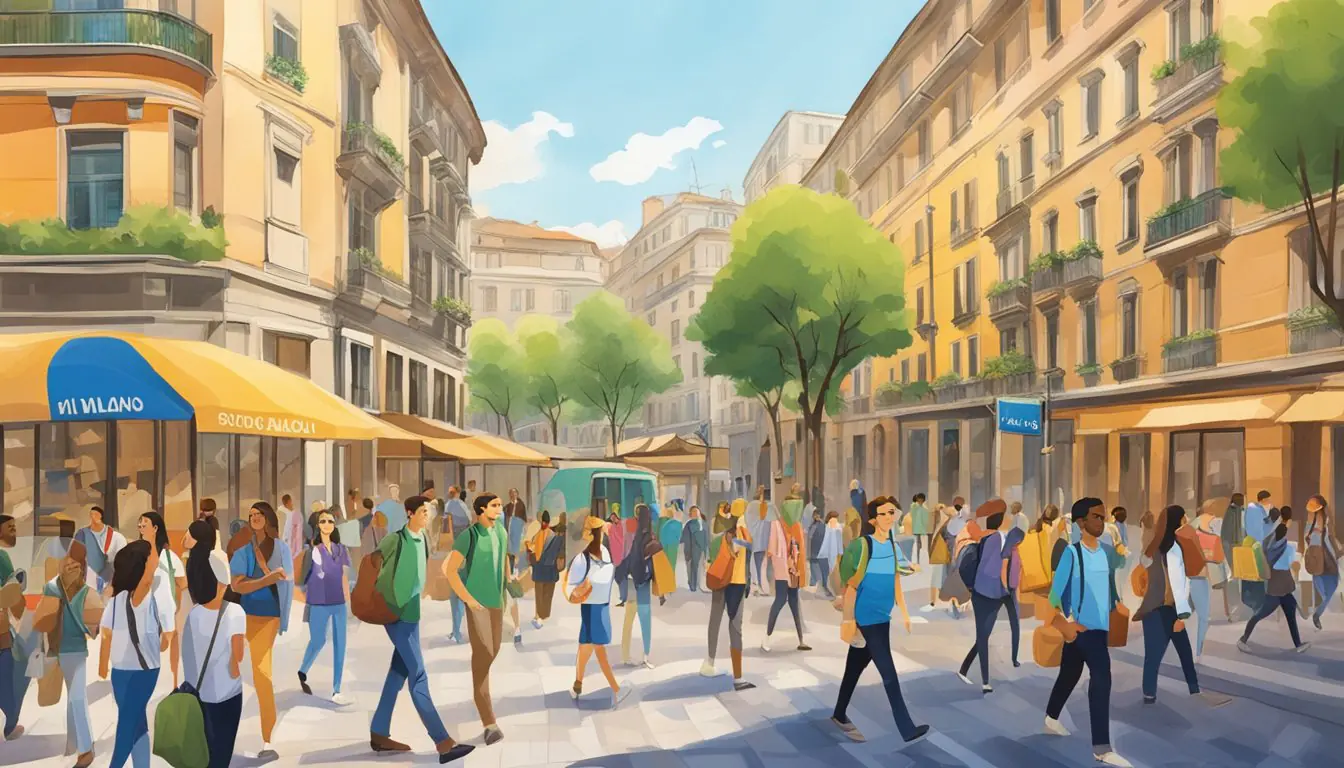
Milan offers an extensive public transport network that is essential for students seeking both affordability and convenience in navigating the city.
Public Transport Options
Milan’s public transportation system is operated by ATM (Azienda Trasporti Milanesi) and includes a mix of modern metro, buses, and trams. The metro lines, in particular, are crucial for students, connecting various parts of the city including key areas like the bustling Garibaldi district and the green expanse of Parco Sempione. A notable advantage for students is the reduced fare for individuals under 27, making the cost of getting around more budget-friendly.
| Transport Type | Lines/Routes | Note |
|---|---|---|
| Metro | M1, M2, M3, M5 | Red, Green, Yellow, and Purple |
| Bus | Multiple | Extensive coverage |
| Tram | 1, 14, 19, etc. | Scenic routes through the city |
Navigating the City
Students can conveniently travel to Milan’s Lombardy region and important sports venues such as San Siro stadium, officially known as Stadio Giuseppe Meazza, via the metro and tram services. The city’s layout is mostly straightforward, making it relatively easy for students to learn their way around, especially when armed with a reliable map or a GPS-enabled device. Most importantly, the compact nature of Milan’s urban core means that once in the center, many attractions and university campuses can be reached on foot.
Accommodation and Living
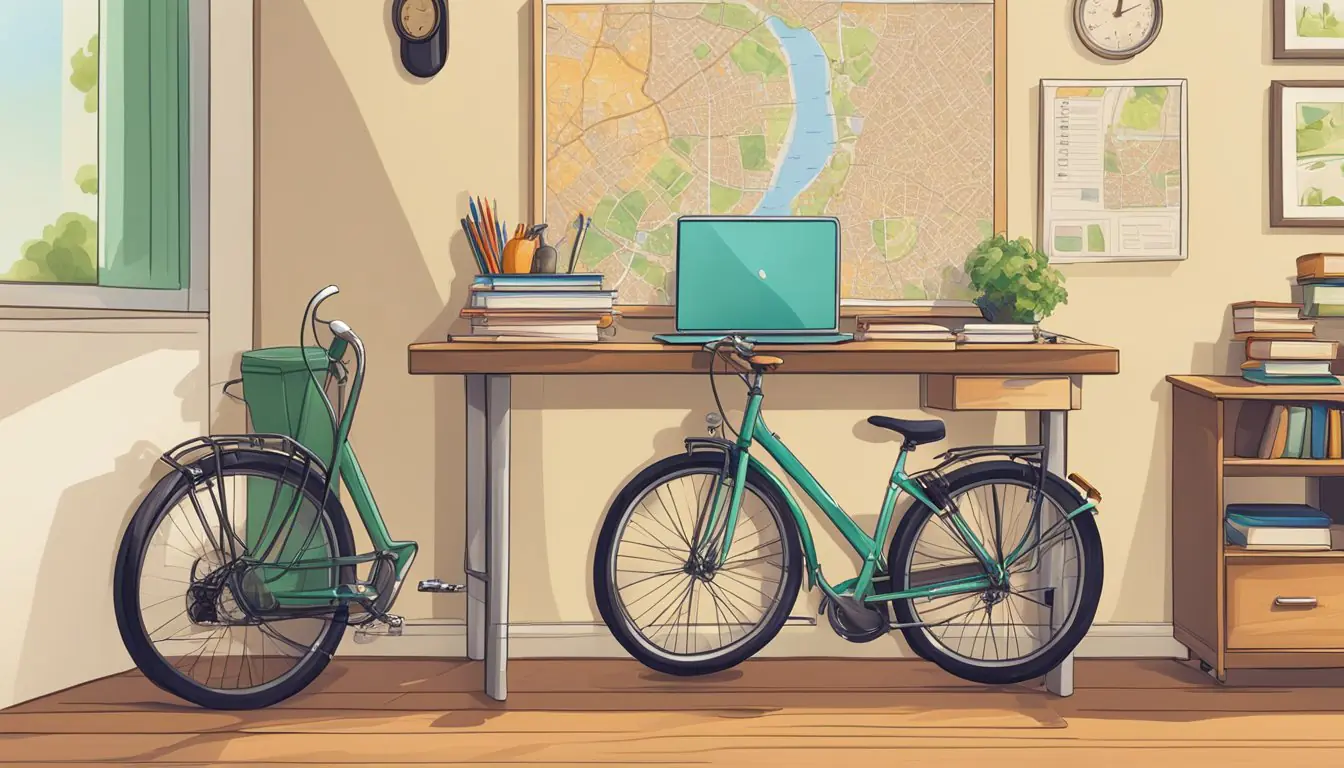
Selecting the right student accommodation in Milan is crucial to ensure a balanced and enjoyable university experience.
Finding the Right Place
In Milan, students have the option of considering an apartment rental with a variety of amenities tailored to their needs. It’s important to prioritize a safe neighborhood and proximity to university campuses. Students can choose between private apartments or university-affiliated student accommodation. You may find useful information about living in Milan as a student and tips for moving to the city on ELLCI.
Luxury vs Practicality
Luxurious student residences offer features like in-house fitness centers and modern designs, which come at a higher cost. Meanwhile, more affordable options might be less lavish but still provide the necessary comfort and fully furnished spaces. Considering the climate in Milan, it’s also practical to look for accommodations with heating and cooling systems. For an understanding of the best accommodation options that balance luxury and practicality for students in Milan, Collegiate can be a good starting point.
Professional Opportunities
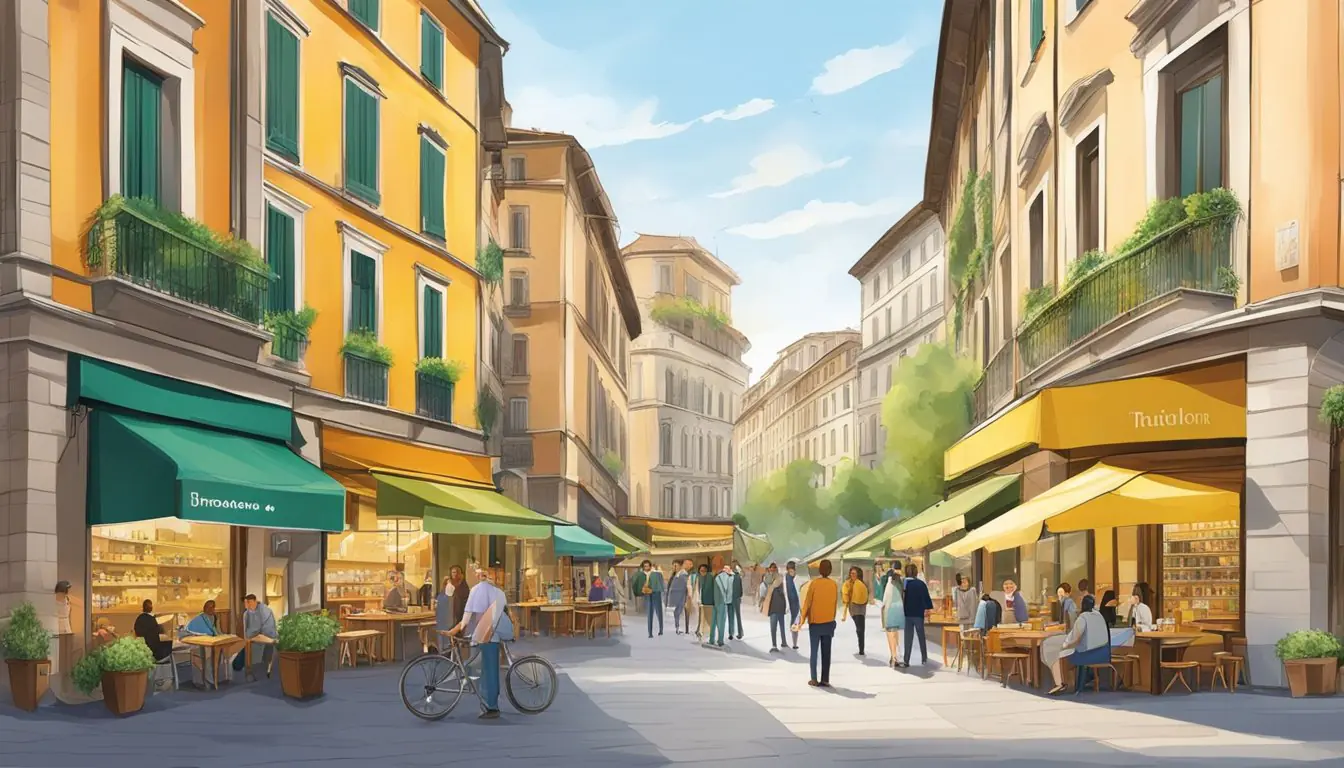
Milan’s dynamic business environment offers students a wealth of professional opportunities. Key sectors such as finance, media, engineering, and research unlock myriad career paths, while the city’s status as a business district ensures a thriving job market post-graduation.
Career Prospects in Milan
The city of Milan is a significant business district, cementing its reputation as Italy’s economic powerhouse. Students in finance and engineering sectors specifically find Milan appealing due to its host of multinational corporations and start-ups. Graduates often pursue careers at prestigious companies, leveraging the educational foundations laid by Milan’s esteemed institutions. Tourism also plays a pivotal role in the city’s economy, meaning students from hospitality and related fields have a chance to ply their trade in one of Europe’s most visited destinations.
Internship and Networking
Milan’s institutions are well-integrated with the industry, offering students practical experiences through internships with leading firms in various sectors. Besides providing valuable hands-on experience, internships in Milan are essential for building professional networks. They pave the way for potential employment opportunities in fields ranging from media to research. Education in Milan is not just about academia; it’s also about immersing oneself in a professional culture that values innovation and practical learning.
Frequently Asked Questions
When considering student accommodation in Milan, it’s essential to explore affordable neighborhoods, understand the cost of living, and learn how to maximize your budget and experiences in the city.
What are the most affordable areas for student accommodations in Milan?
Affordable areas for student accommodations in Milan often include districts like Bovisa and Città Studi. These neighborhoods offer a balance of low-cost living options suitable for students who prioritize budget without sacrificing connectivity to universities.
What should students know about the cost of living in Milan?
Students should be aware that Milan is one of Italy’s more expensive cities. Essential expenses such as rent, groceries, transportation, and leisure activities can vary greatly depending on lifestyle choices and the area of the city one resides in.
What are the best tips for students to live cost-effectively in Milan?
To live cost-effectively in Milan, students can take advantage of discounts and student deals, share apartments with roommates, and utilize public transportation. Cooking at home rather than dining out frequently can also significantly reduce expenses.
Which districts in Milan are popular among students, and why?
The Navigli district is popular among students for its vibrant nightlife and cultural scene, while Porta Venezia is known for its diversity and vintage shopping opportunities. Both offer a unique blend of social engagement and proximity to educational institutions.
What cultural adjustments should students be prepared for when moving to Milan?
Students should be prepared for the Milanese pace of life, which includes longer meal times and a strong emphasis on fashion. Adapting to local customs, such as the Italian language and the city’s business-centric culture, will be an integral part of the experience.
How can students enrich their academic and social experiences while studying in Milan?
Students can enrich their experiences in Milan by engaging with the city’s vast array of art galleries, museums, and cultural events, as well as by networking within the notable fashion and design communities. Participation in university clubs and local groups can further enhance personal growth and connections.

